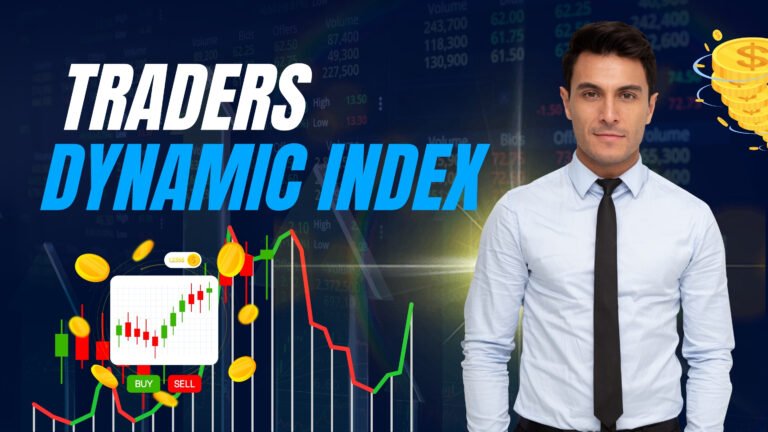Traders Dynamic Index (TDI): Key to Smart Trading
Traders Dynamic Index (TDI), a comprehensive technical analysis tool. Understand the TDI indicator, its meaning in TDI finance, and how to use it to identify trading opportunities effectively.
Table of Contents
Are you also confused about whether to use the Relative Strength Index, Bollinger Bands, or Moving Averages? Well, you’re not alone. These three are among the most valuable indicators, and selecting the right one can be challenging.
What if you could use one indicator and get a comprehensive analysis of all three? You can do so with the Traders Dynamic Index (TDI) indicator. The TDI indicator combines the strengths of these tools to offer traders a clearer view of the market.
In this blog from Beirman Capital, we will dive deep into TDI finance, explore the meaning of TDI, and discuss how to trade with the Traders Dynamic Index including its pros and cons. Let’s get started
What is the Traders Dynamic Index?
The Traders Dynamic Index (TDI) is a technical analysis indicator that combines Bollinger Bands, Moving Averages, and the Relative Strength Index. The Traders Dynamic Index indicator provides key insights about the rise and fall of assets, the current prevailing trend, momentum, and volatility.
If you want to define TDI in simple terms, it’s a versatile tool offering a comprehensive view of market behavior. The TDI indicator is available on both MetaTrader 4 and MetaTrader 5 platforms, making it accessible to a wide range of traders.
In TDI finance, the meaning of TDI revolves around interpreting price action, volatility, and trend strength, helping traders make smarter decisions. Overall, the Traders Dynamic Index is a powerful addition to any trader’s toolkit.
Key Pillars of the Traders Dynamic Index Strategy
Relative Strength Index:
The TDI considers the Relative Strength Index (RSI) indicator to provide market analysis. The price line in the index represents the RSI for 14 days. To better understand the Relative Strength Index meaning, it measures the speed and change of price movements.
In stocks, Relative Strength Index analysis is widely used to identify overbought or oversold conditions, and the TDI effectively incorporates this into its system.
Moving Averages:
The indicators also use Moving Averages of short-term and long-term time frames. The short-term Moving Average is represented by the trade signal line, often calculated using methods like Weighted Moving Average or Exponential Moving Average for greater accuracy.
Meanwhile, the long-term Moving Average is represented by a market baseline, helping to determine the overall Average Moving Cost over a period. Traders often rely on a proper Moving Average formula to set up these calculations effectively in platforms like Moving Average Excel templates.
Bollinger Bands:
The index also consists of Bollinger Bands, often blue in color. The Bollinger Band setup in the indicator helps in tracking volatility, overbought, and oversold conditions. When the gap between the bands is broad, it suggests high volatility, as reflected in the Bollinger Band width, and when the gaps of the bands are narrow, it suggests low volatility, which can also be measured through the Bollinger Band percentage.
Some traders enhance their analysis by using Bollinger Bands and MACD together or applying a Double Bollinger Band strategy for more precise signals. In certain strategies, you might also encounter the concept of the Bollinger Band on horizontal patterns to assess market consolidation phases.
How to Trade with Traders Dynamic Index Strategy
Interpreting the TDI indicator is quite simple. You just need to watch the lines and key levels to make effective trading decisions. Here is how:
Watch Line Cross Over:
When the price lines move above the trade line, it suggests that the price is expected to rise, suggesting traders open a buy position. Meanwhile, when the price lines move below the trade line, it suggests that the price is expected to fall, suggesting traders open a sell position.
Watch Price Levels:
You can even monitor the price level to identify overbought and oversold conditions. The lines move within the range 0 to 100. When the prices move near 70, it indicates an overbought condition, often referred to as a go high level price situation. When the prices move near 30, it indicates an oversold condition, approaching what some traders might call a level zero price.
Also, when the price moves near 50, it indicates indecision in the market and suggests traders avoid taking positions. Understanding what determines the level of prices in a market can further help in making more informed trading decisions based on these movements.
Identify the Trend:
You can even identify the current trend and its strength through the TDI indicator, making it a valuable tool for trend trading. When the price line moves above the market baseline line, it suggests a bullish trend, which is a key signal when trading price action trends.
Meanwhile, when the price line moves below the market baseline line, it suggests a bearish trend, an important concept in trading the trends. For beginners exploring trend trading for dummies, understanding these signals is crucial.
Additionally, using trend lines for day trading alongside the TDI can further enhance accuracy. Traders often rely on a trend trading calculator to measure potential profits and risk levels when applying a trend trading strategy indicator to their analysis.
Watch the Price Divergence:
Traders can even take advantage of differences between price lines and asset prices, a concept often referred to as specialized diverge price analysis. When the price line forms a higher high but the asset price forms a lower high, it suggests a reversal from an uptrend to a downtrend, indicating a potential divergent price setup.
Meanwhile, when the price line forms a lower high but the asset price forms a higher low, it suggests a reversal from a downtrend to an uptrend, often confirmed by observing divergence volume price behavior in the market.

Pros of the Traders' dynamic index
Clear Entry and Exit Points:
As the tools combine the three most valuable trading indicators, you can perform a comprehensive market analysis. You can identify the trade entry, exit, stop loss, and take profit levels. Also, you can determine the overall short-term or long-term trends, current momentum, and volatility.
Broad Market Overview:
Technical analysis indicators can generate false signals; thus, depending on one indicator is not a great idea. With the index, you are combining the three indicators. So you will get a broader market overview, and the chances of wrong decisions are limited.
Versatility:
You can use the traders’ dynamic index to trade different assets such as forex, stocks, commodities, indices, and others. Also, you can even use short-term, medium-term, and long-term trading opportunities.
Cons of the Traders' dynamic index
Complex:
Different lines and bands are formed when you combine three indicators on a chart. It may create a mess on a chart, which leads to big confusion and complexity.
Not ideal during choppy market:
The indicators may not work well during a highly volatile market, and unstable market conditions. So during such scenarios, traders may end up making the wrong decisions.
Bottom Line
The Traders’ Dynamic Index is undoubtedly a great forex MetaTrader Indicator. You can identify potential buying and selling opportunities for diverse time frames and trade strategies.
You can actually make profitable trade decisions with this tool if used correctly. Also, technical analysis should be integrated with fundamental and sentiment analysis for informed trade decisions.
At Beirman Capital, we understand the importance of testing your technical analysis knowledge before using any tool. We provide a demo account facility so you can test diverse indicators on our platform.
FAQ
What is the traders’ Dynamic Index?
The traders’ dynamic index is a technical analysis indicator that combines Bollinger Bands, Moving Averages, and the Relative Strength Index.
Is TDI a good indicator?
Yes, TDI is a good indicator that provides comprehensive market analysis regarding the current prevailing trend, momentum, and volatility.
What indicator do most traders use?
Bollinger Bands, Moving Averages, and the Relative Strength Index are the indicators most traders use.
How to Interpret TDI?
Keep a watch on Price Line, Market Base Line and the Trade Line on the chart. Watch these lines crossover to interpret the indicator.
What are the Benefits of using the TDI?
Clear Entry and Exit Points
Broad Market Overview
Versatility and Universality
What are the Limitations of the TDI
TDI can be a complex indicator with so many lines and bands on the chart, and may not be ideal during a choppy market.
Get Complete Forex Trading Assistance



